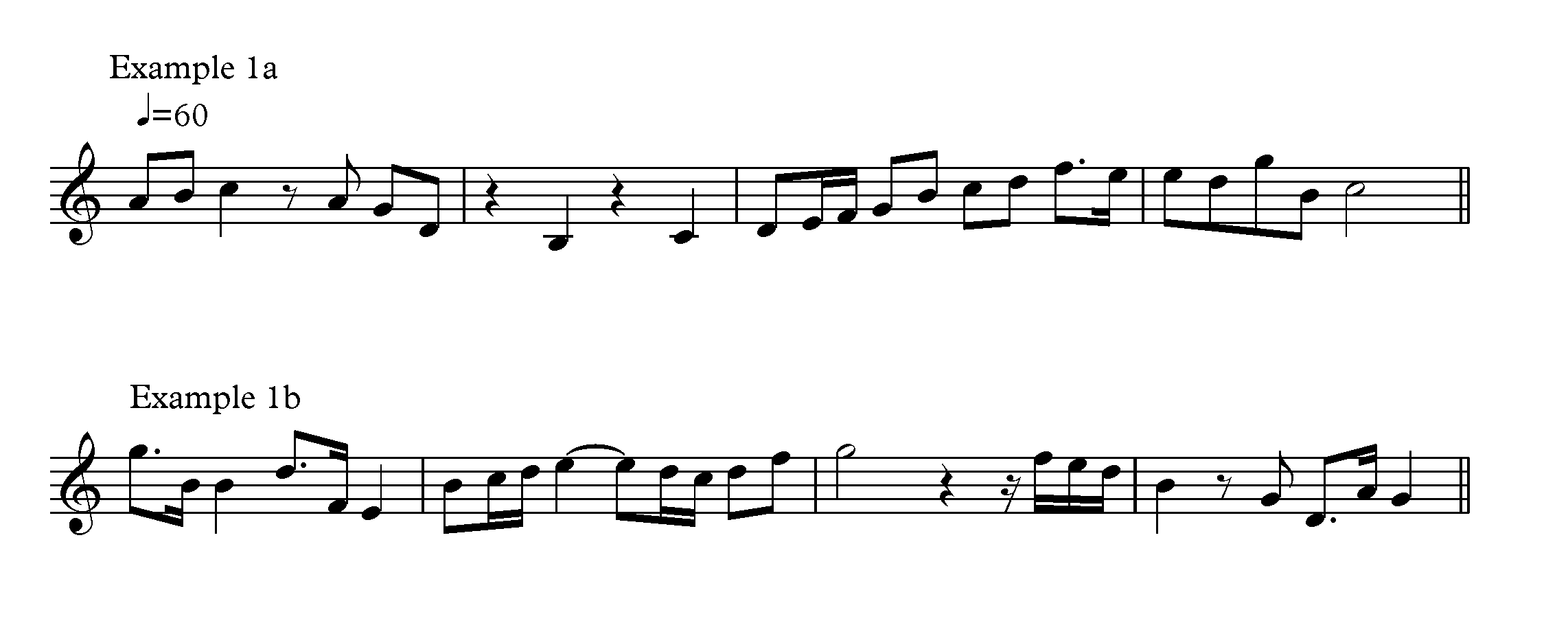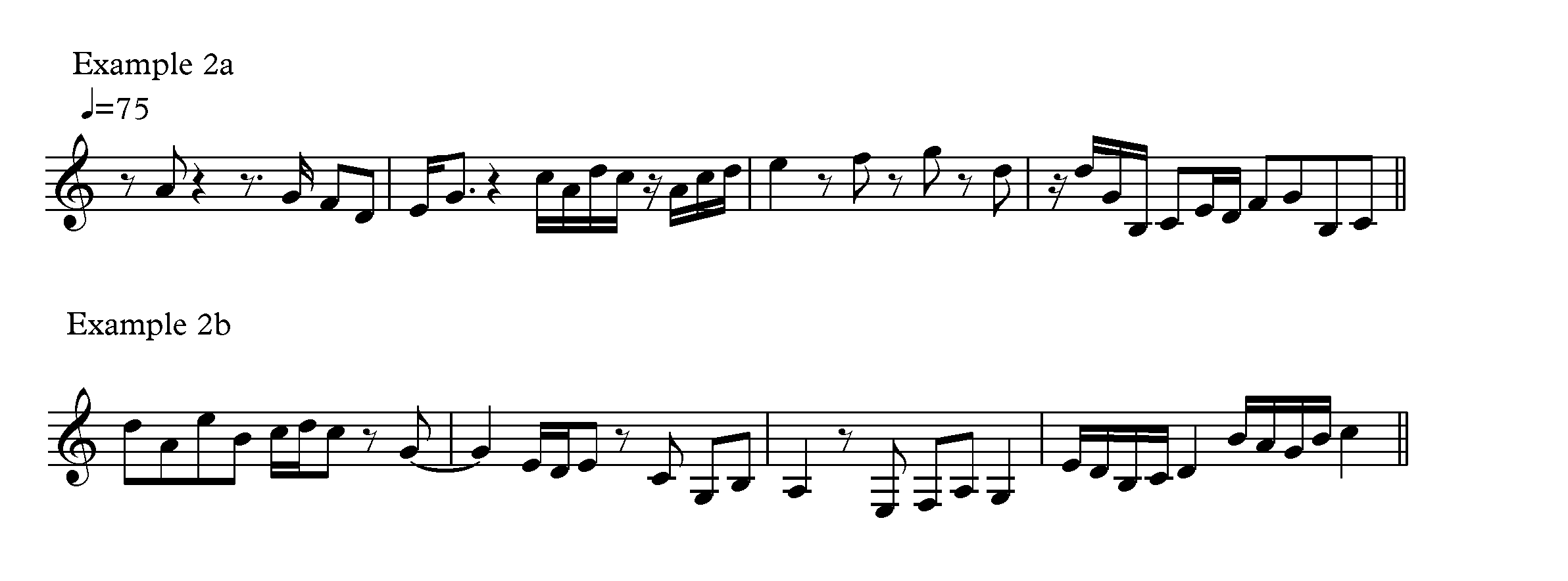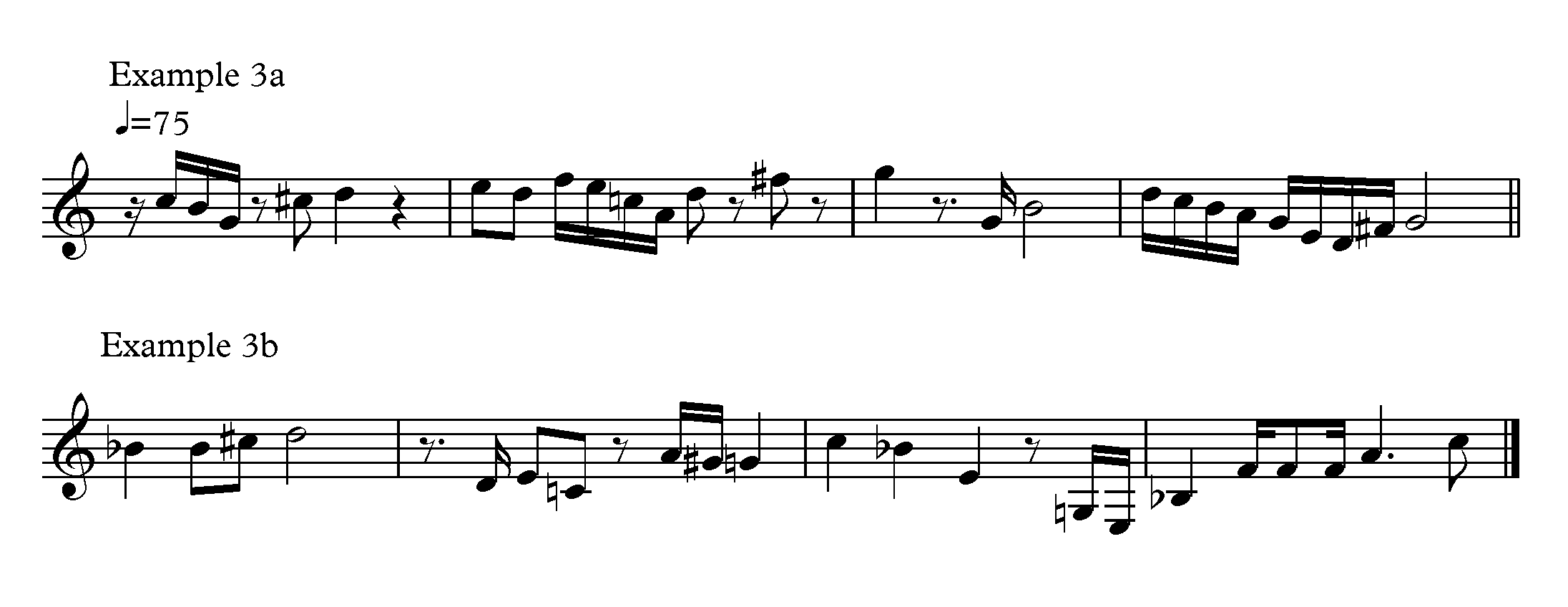Sight Reading Part 3 – Melody reading and Accidentals
By Rob Thorpe
In week one we looked at identifying the pitches on the stave, and last week we looked at interpreting rhythmic notation. Now we will combine the two elements to read some melodies, before increasing the difficulty a little more by introducing chromatic notes with the use of accidentals.
You may be tempted at the start to decipher each note by name as you go, especially when the thought process still feels sluggish, but a competent reader is interpreting patterns of notes, much like how we observe a word or group of words at a time rather than each letter. Even when starting out it is worth bearing this goal in mind so you can start to think about reading in the right way.
Examples 1a-b
Let us dive right into examples 1a-b. Here are two melodies that stay within the constraints of the C major scale to ease us in. Aim to play these examples using first position as we practiced in lesson one to keep things simple. By sticking within one scale shape we can identify the starting note and then follow the line of notes up or down the scale shape, allowing for any leaps (intervals of a third or wider)

Examples 2a-b
I’ve ratcheted up the complexity a little for ex 2, but otherwise the same principles apply. There are more leaps and more semi-quavers. It is useful to play to a metronome when practicing reading. We are not aiming for technical perfection but a metronome will force you to keep going regardless of mistakes. Tap your foot, and learn to treat each note as water under the bridge.

Examples 3a-b
For our final couple of phrases, I’ve included some chromatic notes. Sharp and flat signs (known as accidentals) before each note head signify that the should be flattened or sharpened from it’s natural pitch. A natural sign cancels a previous accidental applied to the same pitch. Try to keep in mind the parent scale (in this case C major) and view the chromatics as alterations within the scale shape.

For practicing lots of melodies that generally stay within a single key, including a small amount of accidentals, I would recommend JS Bach’s Two part inventions for harpsichord. These very scalic pieces look dauntingly dense but will fall under the fingers with surprising ease! The advantage is you can encourage your friends to practice their sight reading too, as they make fun duets with a second guitarist (or bassist) taking the bass part.
So far we have limited ourselves to first position to avoid the challenge posed by the guitar’s multiple locations for each note. Next week we will look at opening up the rest of the fretboard to reading, so it may be worth you revising the note names on the neck if this is something that you don’t feel completely fluent with.
Recommended Reading: Joseph Alexander has written a brilliant book of reading exercises for Fundamental Changes
| Read Previous Lesson | Read Next Lesson |
“The artists you work with, and the quality of your work speaks for itself.”
Tommy Emmanuel
© Copyright Fundamental Changes Ltd 2024
No.6 The Pound, Ampney Crucis, England, GL7 5SA
